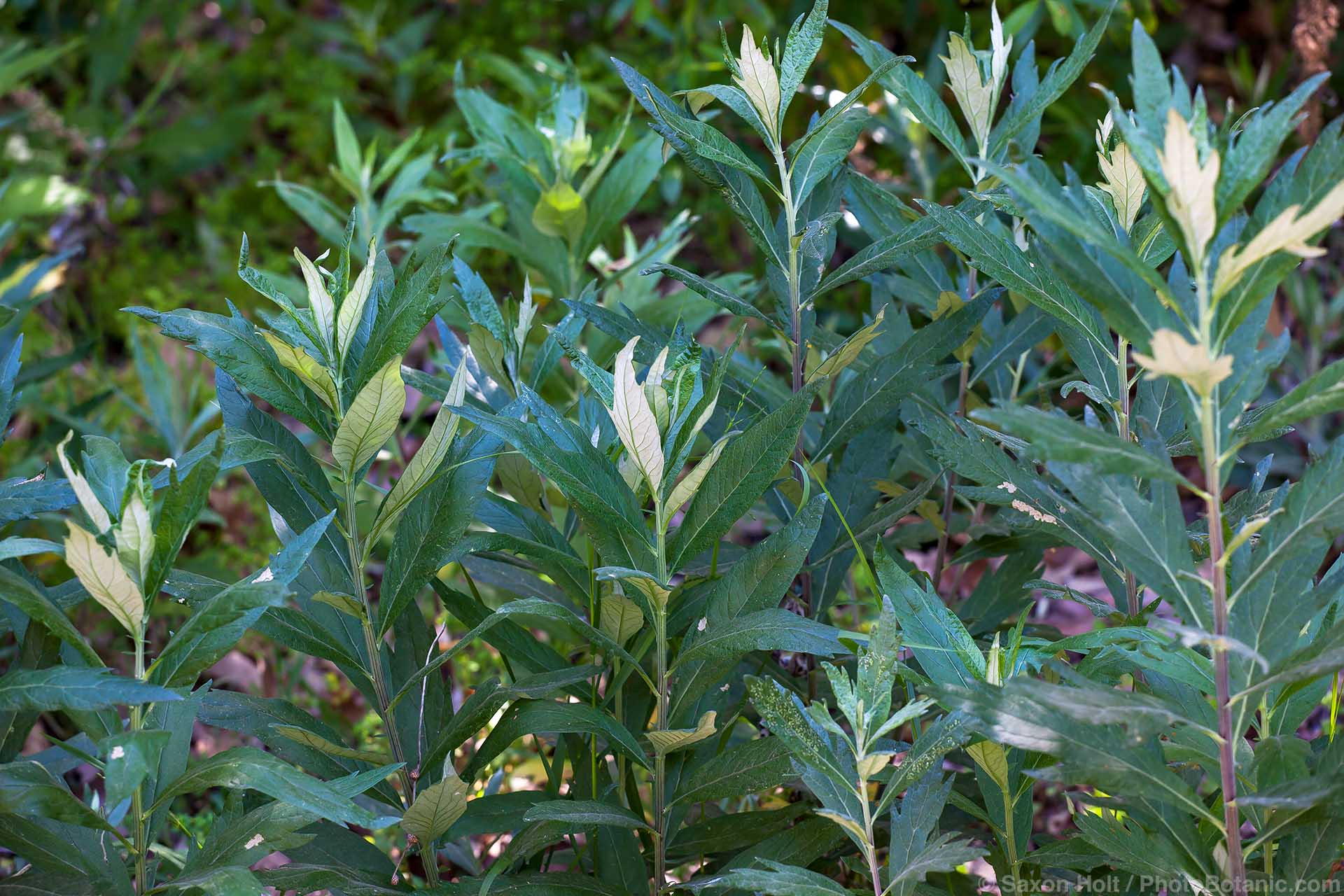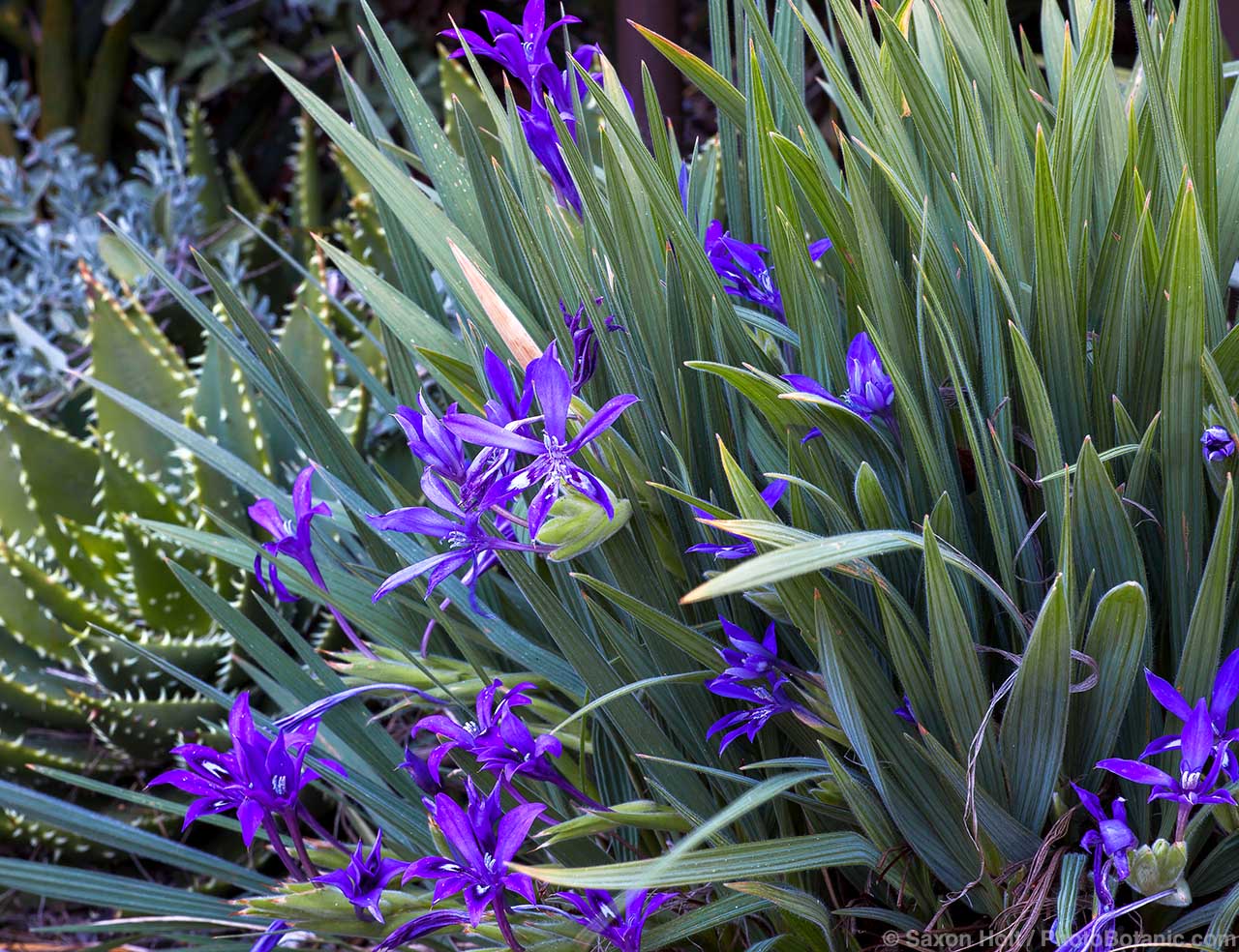Leucadendrons for the Garden
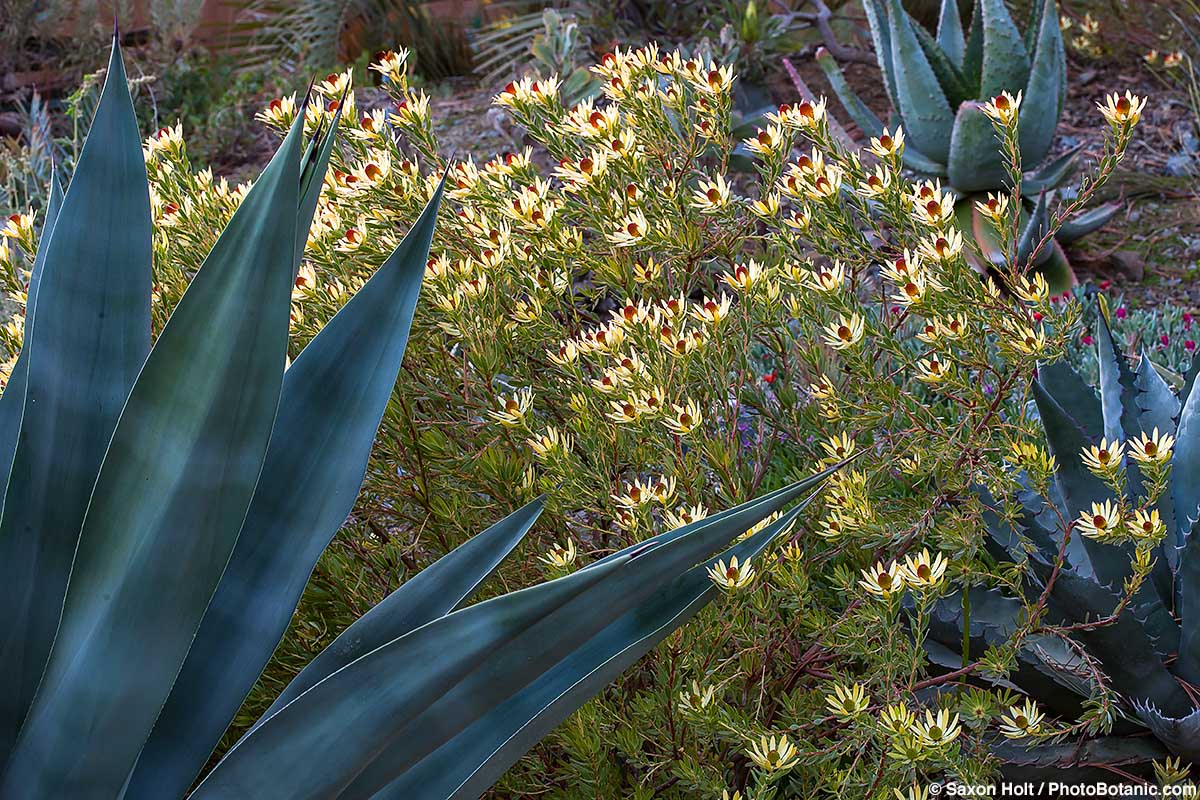
Share This!
Familiar to many as a knockout component of floral arrangements, leucadendrons are every bit as impressive in the garden. Most are best grown where winters are mild, soils are acidic, and excellent to perfect drainage can be provided, but some are less fussy than others. Dozens of these South African endemics are native to varied habitats, from damp coastal flats to frosty mountain slopes and from the summer-dry Western Cape to summer-rainfall KwaZulu-Natal.
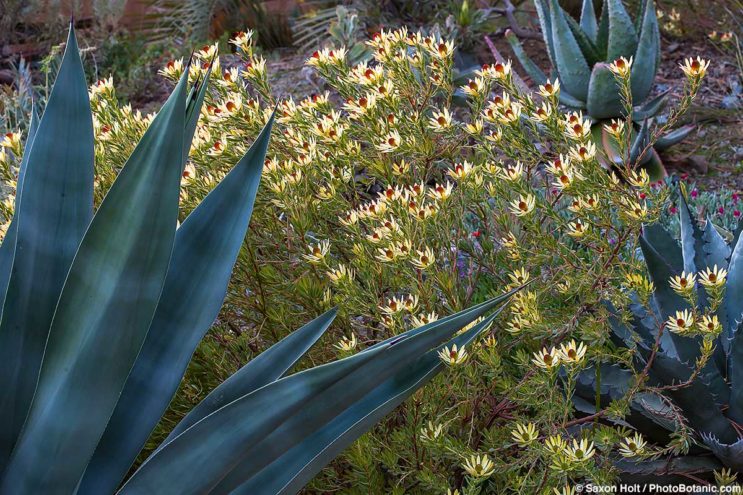
Leucadendron ‘Little Bit’, a hybrid of L. salignum and L. discolor, is a delicate offset here to the bold blue leaves of Agave americana
Most leucadendrons are small to medium-sized shrubs 3-6 feet tall and wide, although many are large shrubs 8-10 feet tall or more and a few are 25- to 30-foot trees. Most bear lance-shaped to oblong leaves (a few are needlelike) neatly arrayed on upright branches and tight clusters of tiny flowers surrounded by prominent bracts that resemble petals. Bracts change color as flowers form, usually in winter to early spring but in some species in late spring and early summer or in fall to early winter. Flowers on female plants mature to persistent, woody, conelike seed heads, giving rise to the common name of conebush.
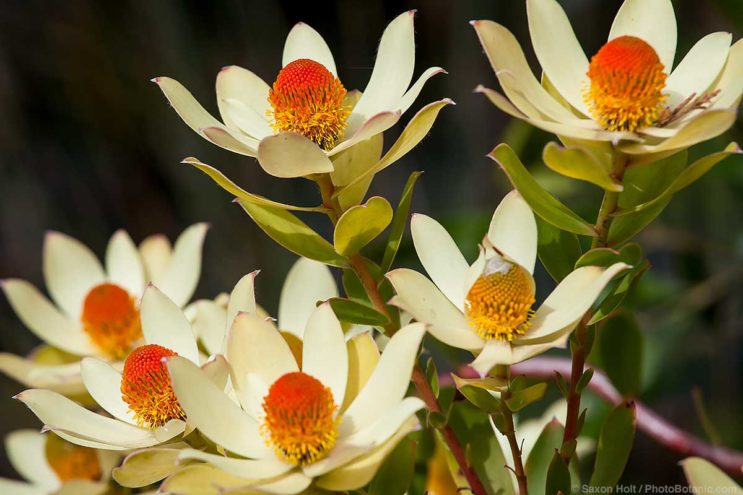
Creamy white bracts surround conical, bright orange flower heads of Leucadendron ‘Cloudbank Ginny’
Leucadendron salignum is one of the most widespread leucadendrons in South Africa and among the easier ones for garden cultivation. Found naturally on a variety of soils from coastal Eastern Cape Province to the mountains of the Western Cape and from sea level to over 6,000 feet, the species is variable in habit, height, leaf size, and in the seasonally changing colors of the bracts. With such wide variation, it is often used in breeding.
Selections of Leucadendron salignum include ‘Blush’, 3-5 feet tall and wide with bright red stems, red new growth, and bracts that age from deep purplish red to a combination of red and creamy white. ‘Winter Red’ is a little taller and wider with purplish red new growth and bright red bracts in winter. Many L. salignum cultivars are hybrids, often with L. laureolum, another adaptable species commonly used in breeding.
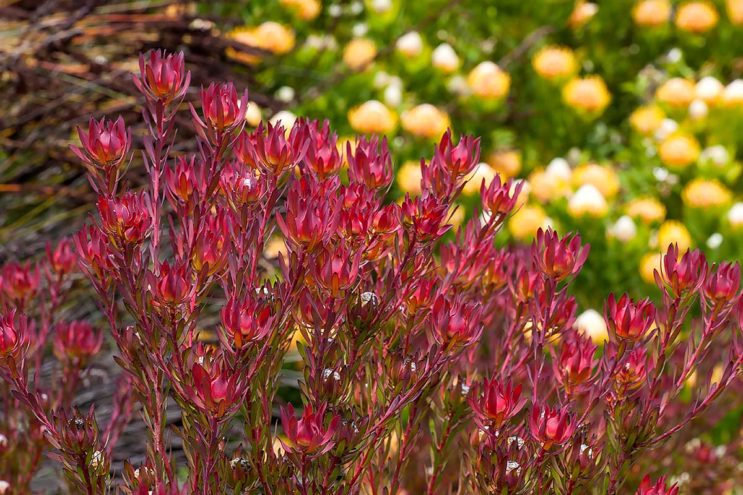
Winter colors of Leucadendron salignum ‘Winter Red’
Leucadendron laureolum is native to sandy flats and rocky slopes from sea level to about 3,000 feet and from the Cape Peninsula to the mountains east and northeast of Cape Town. The species is usually a mid-sized shrub, 4-6 feet tall and wide with greenish yellow bracts that turn bright yellow in midwinter to early spring.
One of the most commonly grown leucadendrons, L. ‘Safari Sunset’, is a hybrid of L. salignum and L. laureolum. This is a large shrub, 8-10 feet tall and 6-8 feet wide, with dark green leaves, new growth bronzy, and deep red bracts, creamy yellow at the base, that flare widely in winter to reveal creamy white cones of flowers. Taking its cue from adaptable parents, once established ‘Safari Sunset’ accepts some frost, alkalinity, and even clay soils as long as drainage is reasonable.
Several other cultivars with the same parentage are similarly adaptable. ‘Red Gem’ is 2-4 feet tall and 4-5 feet wide, with red-tipped green leaves and red bracts in winter. ‘Inca Gold’ is 4-6 feet tall and wide with yellow-green leaves on red stems and yellow bracts with red tips in winter. ‘Ebony’, a sport of ‘Safari Sunset’, is 6-8 feet tall with dark purple leaves and burgundy bracts, and ‘Jester’, another ‘Safari Sunset’ sport, has variegated green, pink, and creamy white leaves and red bracts.
There are dozens of species and cultivars of Leucadendron to try, but these are some of the easiest for gardeners just starting to grow them.
Even with the easier leucadendrons, good drainage is essential. It’s also important to avoid disturbing the soil beneath and around them as their specialized roots form a dense mat just beneath the soil surface.
Leucadendrons do best in full sun with good air circulation and roots kept cool by organic mulch. Chemical fertilizers should be minimized or avoided entirely, especially those containing phosphorus. These plants are adapted to nutrient-poor soils and suffer in soils of high fertility.
Share This!
Related Articles
By: Nora Harlow
By: Nora Harlow
By: Nora Harlow



